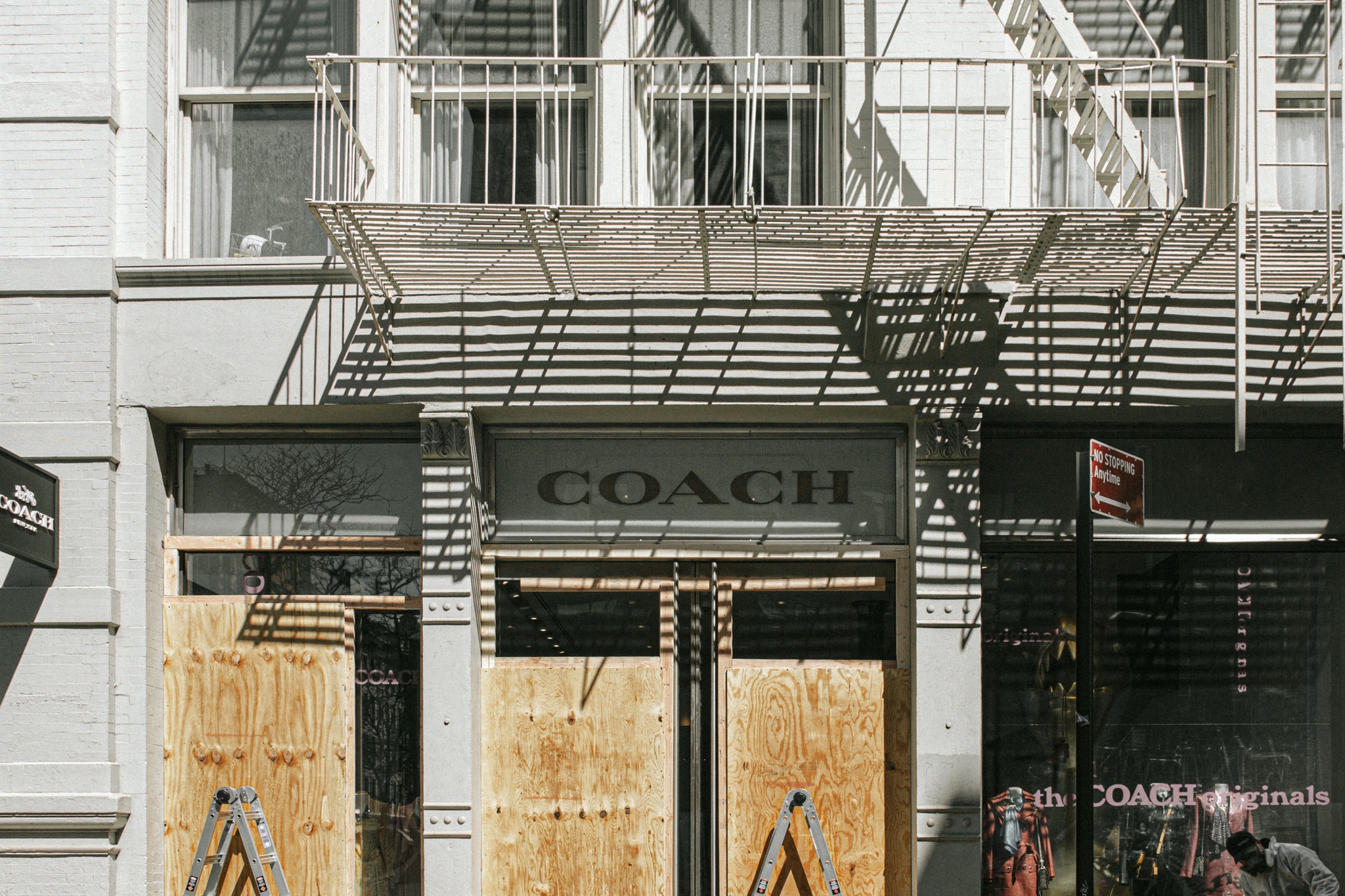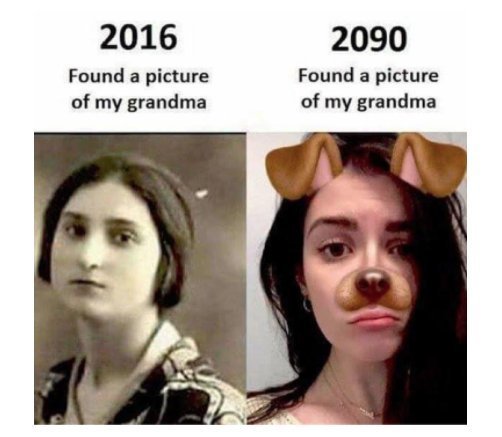For three weeks, I have wondered: how much of what I’ve thought and written about on this site is even relevant now?
Everyone who thinks about culture must ask themselves this on a regular basis. But these circumstances call for a more serious reevaluation. The pandemic has fractured the discourse, exposing how many layers of assumptions formed the bedrock. Access to goods. Mobility. A functioning global economy. Health. Friends and collaborators are wondering the same thing. Surrounded by a cacophony of blame and helplessness and cope, it’s hard to hear yourself think.
Finally, last Friday’s unusually warm evening, spent on the roof of my NYC quarantine zone, gave way to clarity. The right questions came: which of my beliefs remain unchanged? What assumptions will remain in place? What trends will be accelerated, which delayed, and which stopped entirely? What do I care about that has become newly relevant, and what no longer matters?
I circulated these questions to a few friends. What follows here is little more than a cleaned up version of our notes. To be sure, these premonitions are based on a certain depth of cultural observation and processing. But premonitions nonetheless. On the other side of this is the unknown. But if you’re already tracking the intangible, you can hit targets others can’t see.

Culture
For the last few decades we’ve watched the fragmentation proliferation of lifestyles. This parallel evolution seemed to reach a high-water mark in the 2010s for two reasons: A) supply chain efficiencies enabled low-cost production of lifestyle goods, and B) participation in these lifestyles and microcultures also moved online. Both made lifestyles hyper visible.
Under quarantine conditions, there is less opportunity to physically signal one’s participation in a culture, so clothing and conspicuous consumption matter less. Instead, public lifestyle display and subcultural posturing will happen primarily online.
→ After the current display of consumption-as-resilience subsides, we’ll see less emphasis on artifacts — goods, clothes, and consumables.
→ Activities and practices, narratives, and knowledge, which are equally vital components of culture, will instead take precedence. Memes, discourses, aesthetics, language, specialized knowledge and activities, all taking place online, will be the vehicles of lifestyle performance and participation. We’re already seeing plenty of new reading groups, curation modes, and remote hangout formats. Knowledge tooling will be extremely important to this new set of online cultural formation.

A driver here is burnout from the mainstream social web. People previously had IRL hangouts in small numbers to provide intimacy. Now that these spaces are inaccessible, social interaction is moving online. There’s only so much of mainstream social networks, especially those with mass visibility logic (Twitter, Instagram, TikTok), that people can handle.
→ There will need to be new types of interface and digital social environment to support the continued proliferation of lifestyles. We’ll probably see a flourishing of new, social micro-networks. They will not be for everyone. They will be private in nature, and will support between 20 and 1000 people.
→ We’ll see a dramatic acceleration of the exodus from clearnet that began a few years ago.
→ These new social interfaces and environments will breed new types of community and subculture, weirder than before.
Brands
Slickly branded goods and services would likely have taken over our culture and mindshare in the 2010s under most circumstances. However, the infamous venture-funded millennial-branded direct-to-consumer category is recognizable as the result of US monetary policy. Quantitative easing and low interest rates made cheap borrowing possible, and the resultant expansion of venture capital led to many traditional consumer product businesses being funded. Thus, although aesthetic of authenticity and “premium mediocrity” emerged as a result of the financial crisis, they were sustained by money printing.
→ Now that a few high profile DTC brands have been punctured on the public market and the economy is crashing, VC-driven DTC business model will likely go into its own recession. Without DTC, there is an opportunity for a variety of smaller, more sustainably funded players who do not seek hypergrowth.
It’s worth remembering that DTC is not just a type of brand but a business model that utilizes effectively infinite venture funding to flood the market with ads and capture market share. If this is no longer possible…
→ Building brands around shared ownership with customers will probably be increasingly important. Expect to see more crowdfunding, patronage, community, and membership-based go-to-market strategies which make ownership an explicit part of the brand experience. Several crypto-adjacent teams are exploring this territory already.
Creators can use tokens to capture their idea in something that people can hold.
— 🌜🌞🌛 (@ourZORA) March 27, 2020
It means that people can own a piece of the future that they want to happen, which makes it more likely that it will happen. And when it does happen, it's theirs.
Creators ⟷ ◯ ⟷ Community pic.twitter.com/ab1JpCwTIw
Microbrands will be devastated by the recession. We’ll probably see dropshipping companies and other low-margin businesses (skate-shop sized companies) wiped off the map due to financial difficulties and supply chain interruptions. One question I have here is what kinds of supply chain will not be upset? Southeast Asia seems to be less affected by the virus.
On the other hand, it will still be as easy as ever to create a visual identity and set up the technology needed to run a brand. What kind of brands work online — or are online-first?
→ Media and content brands with membership models will likely do very well, as will games, both indie and platforms like Roblox. We’ll see more brands which do not hold any assets whatsoever, but are simply groupings of individuals giving themselves a name and a presence.
Space
 Haruka Sakaguchi for New York Times
Haruka Sakaguchi for New York Times
At some point we will see a return to public space, but with a whole bunch of urban retail and restaurant closures. While some restaurants will re-open, we will not see a significant return of retail to cities. With the economy in recession, people will not have the money or inclination to spend on goods. At the same time, some communities that formed online during this period will want to find each other and continue in meatspace.
→ Wide availability of cheap ground-floor space will create new opportunities for urban revitalization. Cities will need to put incentives in place for small businesses to take over these spaces, and stem the blight of banks and pharmacies that have eaten ground floor retail, have genericized walkable cities in the last decade.
People who left the city due to safety concerns or simply for affordability reasons may not return. Combined with the increasing viability of remote work and zero-hour contracting, we may see further evacuation of the city and a new wave of suburbanization.
→ Bringing with them metropolitan-grade expectations and technology knowhow, the implants of “Suburbia 2.0” will seed the beginning of a new Americana culture, as well as suburban development and investment. This is a long-term prediction.
→ Dense cities like New York, which will probably experience the worst pandemic outcomes, might reclaim their 20th-century reputations as unclean or unsafe places. Demand for sanitary enclaves within cities will increase dramatically, complemented by pervasive surveillance. If perceived pandemic risk becomes another cost associated with urban life as more jobs can be done from anywhere, these forces will provide a new logic for sorting people between cities and suburbs, with the latter becoming the default location for individuals without a strong preference for the former.
The quarantine period will have demonstrated the viability of selectively retreating from public space as needed, a process supported by products ranging from Zoom to Amazon Prime to Netflix as well as additional infrastructure that emerges during the quarantine itself. This will reinforce an already-developing attitude that traditional urban life is effectively optional for those who continue to reside in cities and have the means to periodically disengage.
→ Culturally, meatspace will remain downstream from the internet, but digital culture will seek new outlets in the physical world. Meanwhile, more affluent urban populations will have largely retreated from that same public space, a transition facilitated by gig labor and privatized enclaves. The increased availability of urban space relative to demand that results from this will create new opportunities for communities and cultural production to manifest themselves in the physical world.
The fate of the urban environment itself, along with the restaurants and retail that it comprises, will depend upon government interventions at every scale. Without sufficient aid to individuals and small businesses (and even with that aid, to a lesser degree), widespread closures will create a void in commercial real estate demand. Urban brick-and-mortar retail will contract overall due to recession and the continued growth of e-commerce.
→ In a worst-case scenario, retail vacancies will be filled by more corporate chain retailers and even companies like Amazon, who have the cash to buy these distressed assets at a discount or assume their leases. More optimistically, and depending on local interventions, this real estate will become available to a new wave of small-scale entrepreneurs (and even informal uses like squatting in the near term). In the first scenario, the public realm becomes more bland, generic, and lifeless than ever, reinforcing demand for delivery and e-commerce; in the second, that same realm is reinvigorated and returned to its true stakeholders, the people who live there.
Entertainment
In this particular stay-at-home crisis, people will need entertainment more than ever but will have less spending power.
→ Expect an increase in pirating, link sharing, stream sharing, ripping, and other ways of consuming content.
→ Expect a flourishing of new online streaming formats, streaming/meeting hybrids, and participatory gaming variants. I’d also expect socially viral “games,” ranging from e.g. more advanced text chains to full-on ARGs, to take off again in a massive way, especially driven by social networks like Discord and TikTok, the emergent social dynamics of which are less played out.
What other new entertainment models might we see?
→ Expect an increase in online sexwork (pornhub community, onlyfans), and sexwork-adjacent activity (NSFW illustration, e-girling, feet pics, findom).
→ Continuing the theme of new products to serve emergent needs, we may see more advanced infrastructure for sexwork-adjacent activity get built, which formalizes some of these activities with new tools or platforms. Tinder for feet with built-in payments? I’m not joking.
All of this points to new, formalized models for creative labor. Many of these are already nascent, and will become more concrete as creators who can no longer be supported by the brand economy must find new work. We’ll also see the continued unbundling of Patreon into segment-specific interfaces with specialized features.
Tools & Platforms
This situation is forcing us to understand how to retrofit and combine existing technology in new ways to accommodate different social and professional needs. For instance, using Figma has occasionally been used as a place to hang out in and draw, but we’re now seeing furthermore inventive uses.
Playing MTG in @figma with my brother lol pic.twitter.com/rKru5aSbvE
— Ryan (@Flomerboy) March 21, 2020
i guess i’m graduating on FUCKING ROBLOX pic.twitter.com/1r43UwL9nW
— bakugan 🇺🇸⚓️ (@yungthuggamari) March 25, 2020
Both new opportunities and insufficiencies are being revealed in mass communication tooling—Zoom, Notion, Figma.
→ We will probably see Zoom competitors emerge in the next 2 months that serve the JTBD of online collaboration and online socializing much better than Zoom does. I think there are lots of low-hanging fruit in this product space that I’d like to see more of.
→ New tools and platforms will emerge to spatialize content. More virtual environments and UIs for managing different types of screen usage. Increase in organizational apps and calendar plug-ins that manage time-blocking and screen breaks.
New consumption patterns will emerge on mobile devices vs TV vs computers. Now that these devices are all for at-home use, the ways that “second screens” are used will shift for consumers and advertisers. Film, TV, and ads will place more emphasis on live participation through chats and polls, experimenting with new types of viewer input, and building online fan communities with narratives that cross between social platforms and streaming content.
→ Slow TV will make a resurgence on livestreams– long-form coverage of ordinary events shown in real time. Nature cams, city walks, driving, CCTV feeds, etc. We’ll also see a lot more live variety shows featuring remote participation, collaboration, and competition. - Planned and unplanned interruptions (unexpected events) on long-form live feeds will become a meme / narrative format.
- Curation and real-time editing and presentation of multiple live feeds to tell a story will become more common.
- Livestream channels that invite participation and show multiple live feeds from individual performers or participants.
More self-organizing friend groups and professional networks are using video calls and enterprise chat as a way to socialize. As a result, many individuals will suddenly begin to experience their interactions as content that can be public and monetized, and will feel more pressure to externalize their communications for an audience.
 → There will be a rapid increase in podcast-style, conversational live-streams. Professionals and social groups will find ways to monetize and publicize this type of content as micronetworks. Video and audio recordings of online meetings, panels, and presentations (and auto-generated transcripts of them) will become more common as a way to share information.
→ There will be a rapid increase in podcast-style, conversational live-streams. Professionals and social groups will find ways to monetize and publicize this type of content as micronetworks. Video and audio recordings of online meetings, panels, and presentations (and auto-generated transcripts of them) will become more common as a way to share information.
Politics
I am usually more of a technological determinist, but for the current moment, I believe this is the most important category. We are still exiting an era of defunct political parties that are failing and fragmenting, and making our way into an era of discovery and realignment. For the last few years, each cultural crisis — e.g. Trump’s election, Epstein, this pandemic — has revealed a new set of decrepit institutions. Aside from Yang, there have been very few coherent, new proposals about how government and the economy should be run.
At the same time, Silicon Valley has experienced three massive jolts. The first was San Francisco’s housing crisis, which made tech-native workers aware of political implications of space for the first time. The second was the “techlash,” which left Silicon Valley feeling unfairly blamed for problems in America at large. The third is the current moment, in which East Coast-based journalism, media, and government totally failed to understand and deal with the crisis at hand. This one is the last straw, with online voices mobilizing strongly to critique East Coast cultural hegemony
→ The culture war between the East Coast and West Coast, which has been going on for some time, is now all but over. It has self-evidently been lost by the East Coast. The level of momentum and cultural homogeneity among tech-driven culture is unmatched by East Coast media / finance / old money, an insular culture which merely protects its interests.
→ Silicon Valley is awakening to its political interests and political responsibility. Expect California and SF specifically to create more national-grade politicians. LA and SF’s mayors will become political players at the same level importance as NYC and Chicago’s. Silicon Valley thought leaders will become political players with their own ideological factions.
If Silicon Valley is going to become more involved with politics, what positions will it be taking?
→ I expect Silicon Valley will see itself as high-modernist rebuilders of the new economy, the new “captains of industry” who will put in place a new set of public-private infrastructure and public goods, as well as being much more involved in domestic and foreign policy. This will be a centralizing force, and the “decentralization” movement will be the natural counterculture, absorbing both traditional leftists and traditional libertarians into an ideological agglomeration. We will see the tension between centralization and decentralization play out in new ways, especially as tech platforms become explicitly identified as as public infrastructure.
Death
→ After all is said and done for our present pandemic, many thousands of people will be dead and the living will be burdened with a deep recession. Cheap solutions for end-of-life services will be sought and many will turn to the cheapest infrastructure they know of: the web. Streaming services and asynchronous rites will be used to pay the dead their last respects. People inhabiting the worlds of multiplayer games will find ways to erect monuments in-game to their dead friends they’ve never seen face to face.
 → Venture capital will seed companies that make efficient and novel use of people’s posthumous data. Just as lifestyle product development reached its zenith in the vast proliferation of colorfully branded DTC companies, we’ll soon see an outcropping of companies embedding value back into the death condition: Boutique hardware-accessory production firms embedding human remains into a variety of aesthetic forms, Digital graveyards of all genres, education startups interlinking the gathered knowledge of its dead members, brands creating new social experiences around death pacts, etc.
→ Venture capital will seed companies that make efficient and novel use of people’s posthumous data. Just as lifestyle product development reached its zenith in the vast proliferation of colorfully branded DTC companies, we’ll soon see an outcropping of companies embedding value back into the death condition: Boutique hardware-accessory production firms embedding human remains into a variety of aesthetic forms, Digital graveyards of all genres, education startups interlinking the gathered knowledge of its dead members, brands creating new social experiences around death pacts, etc.→ We can look forward to witnessing an infrastructural acknowledgement of the vastness of scale of human death: Initially guised in the form of “public health services”, corporations at the scale of Facebook and Amazon will grow robust services around the handling of the dead, or the soon-to-be dead. In a truly general sense, it’s only a matter of time before the profiles of the dead exceed the amount of living profiles across social networks and companies will develop means by which revenue can be generated from the non-content-producing dead.
→ Corporation-backed affordances for ‘hosting the dead’ will result in everyday people having access to the same technologies that keep Carrie Fisher in suspended animation, forever subject to the whims of profit generation. The everyday influencer will persist past their death, and society will find itself in a position where influential bodies no longer lie in wait to be discovered, but constitute active presences in social networks – virtual human bodies as literal extensions of the advertising–surveillance machine. Virtual influencers will cease to be interesting as the dead-who-still-persist are piloted by lifestyle/PR companies.
Breathe. Read the air. We are all going online in a new way, and we will never entirely leave again. In this new era, cultural literacy is a baseline requirement for making technology, for making policy, for living and for dying. Squad up. The real knowledge work begins now.
